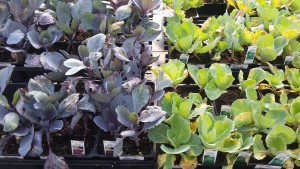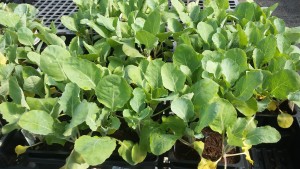Mid to late summer is the second season for planting many (not all) kinds of vegetables and herbs in many parts of the U.S. There is still 3 months or more of great growing weather ahead to harvest veggies planted now. You’ll enjoy great harvests for the Thanksgiving and perhaps the Christmas/winter holiday table (USDA zones 5-7).
Start with leafy greens for salads or garnish such as lettuce, pak choi, chard, and parsley. Carrots, beets, peas, green onions, spinach, radish, and some brassicas (cabbage, broccoli, cauliflower, and turnips) are good picks for the fall garden. Long season veggies such as tomatoes, cucurbits (cucumber, pumpkins, squash, and others), and sweet corn are not included.
Diseases, insects, and weeds are less problems. Crops like cabbage, cauliflower, and broccoli can be store outdoors in the garden row through most of the winter without them going to seed (bolting) or developing a bitter taste. Pick them as you need them for the dinner table. Transplants of lettuce, cabbage, broccoli, cauliflower, and others are available at local garden centers starting in August, depending on locality.
In summer start seedlings in pots, flats, or other containers in the cool home basement under gro-lights or in an outdoor cold frame; or directly sow seeds directly into the garden in dappled sun or light shade, but not in direct sun.
Set your new veggie transplants in a moist garden or raised bed, preferably around twilight when it is cooling off. In the mid-South protect new transplant seedlings under row covers or shade cloth for several days to acclimate them to sun and heat. Light sprinkling (spritzing) seedlings 2-3 times daily also cools seedlings.
Seedlings should adapt to outdoor beds within a week. Keep them adequately watered and fertilized. In USDA zones 8, 9, and 10, some fall-planted crops are harvested all winter long.



 Posted in
Posted in 
